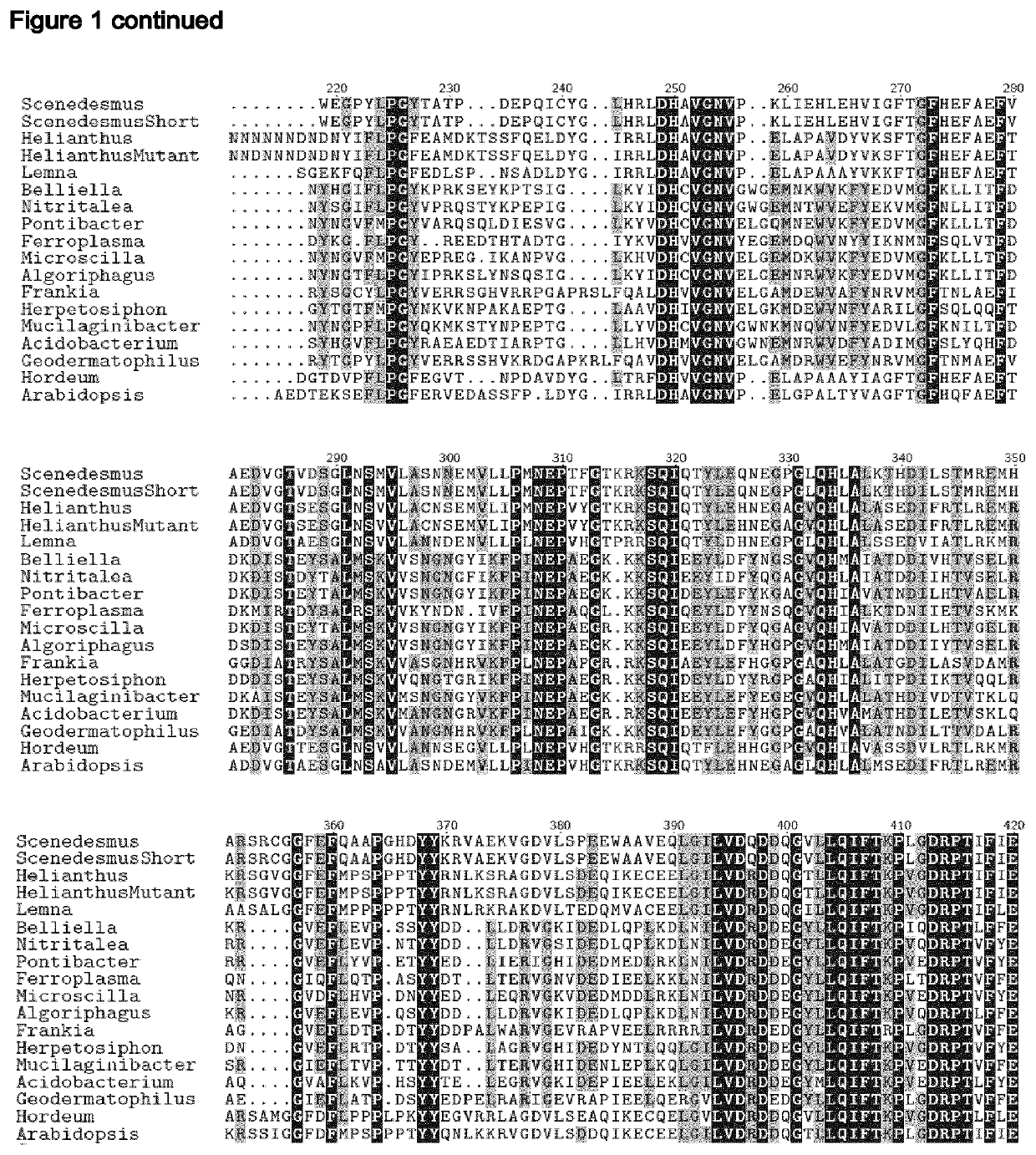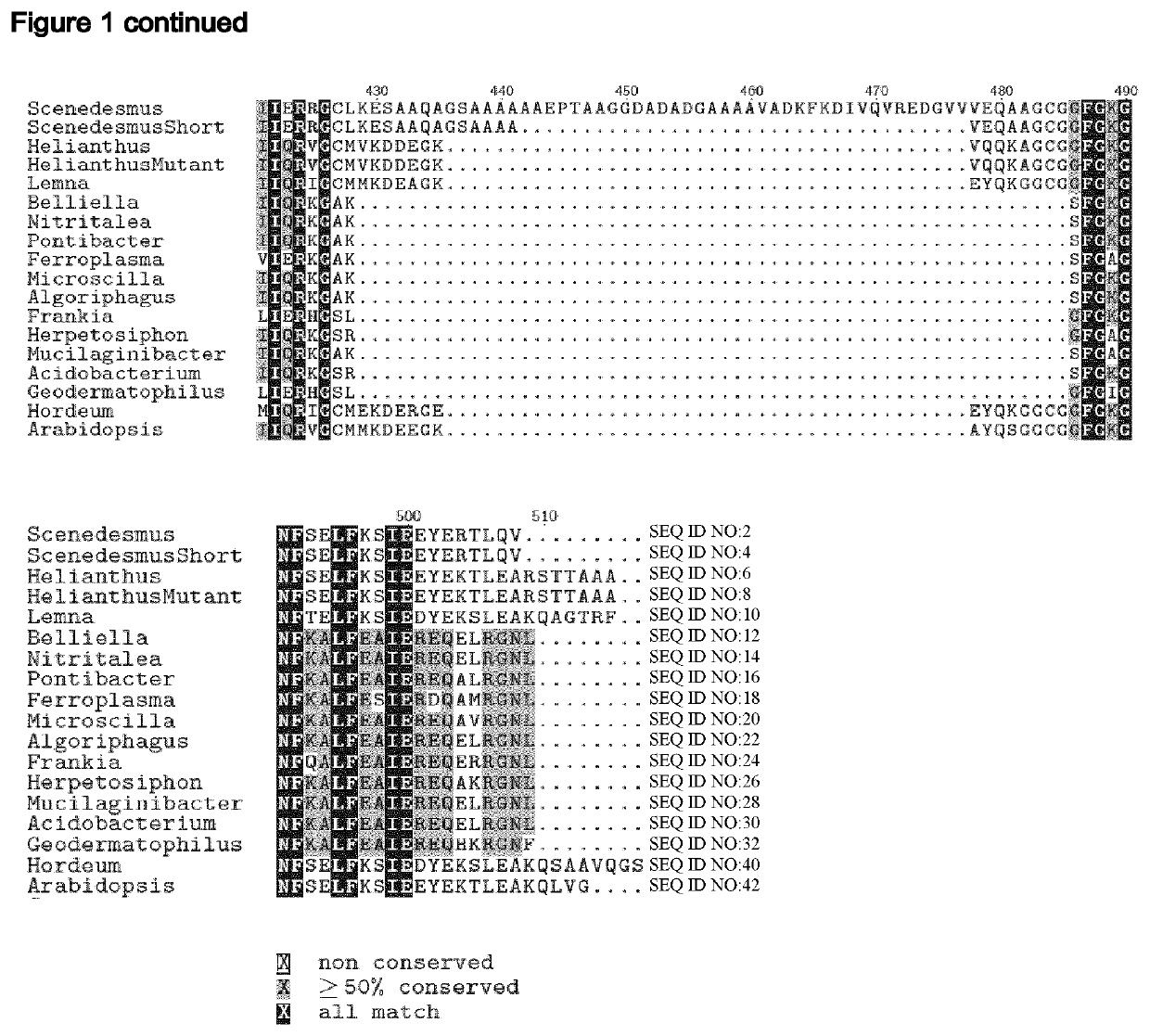Herbicide-resistant hydroxyphenylpyruvate dioxygenases
a technology of hydroxyphenylpyruvate and dioxygenase, which is applied in the direction of oxidoreductases, biochemistry apparatus and processes, enzymes, etc., can solve the problems of chloroplast synthesis and function disturbance, oxidative degradation of chlorophyll and photosynthetic membranes in growing shoot tissues, and the symptoms of bleaching, etc., to achieve the effect of increasing the tolerance or resistance to herbicides
- Summary
- Abstract
- Description
- Claims
- Application Information
AI Technical Summary
Benefits of technology
Problems solved by technology
Method used
Image
Examples
specific embodiments
[0100]Accordingly, this invention provides measures and methods to produce plants with increased herbicide tolerance or resistance.
[0101]Accordingly, the present invention provides transgenic plants showing increased tolerance or resistance to one or more herbicides as compared to the corresponding origin or the wild type plant and methods for producing such transgenic plants with increased herbicide tolerance or resistance. One or more enhanced herbicide tolerance-related phenotypes are increased in accordance with the invention by increasing or generating the activity of a mutated HPPD enzyme.
[0102]The nucleic acid molecule of the present invention or used in accordance with the present invention, encodes a protein conferring an activity of a mutated HPPD enzyme, i.e. conferring herbicide tolerance or resistance to a crop plant while maintaining its enzymatic (HPPD) activity.
[0103]Accordingly, in one embodiment, the present invention relates to a nucleic acid molecule that encodes...
example 2
f HPPD Encoding Genes and Mutants
[0850]All wild type HPPD encoding genes and mutants thereof were synthesized by an external service provider and subcloned into a modified pET24D (Novagen) expression vector resulting in N-terminally His-tagged expression constructs.
example 3
Heterologous Expression and Purification of Recombinant Mutated HPPD Enzymes
[0851]Recombinant mutated HPPD enzymes are produced and overexpressed in E. coli Chemically competent BL21 (DE3) cells (Invitrogen, Carlsbad, USA) are transformed with pEXP5-NT / TOPO® (see EXAMPLE 2) or with other expression vectors according to the manufacturer's instructions.
[0852]Transformed cells are grown in autoinduction medium (ZYM 5052 supplemented with 100 μg / ml ampicillin) for 6 h at 37° C. followed by 24 h at 25° C.
[0853]At an OD600 (optical density at 600 nm) of 8 to 12, cells are harvested by centrifugation (8000×g). The cell pellet is resuspended in a lysis buffer (50 mM sodium phosphate buffer, 0.5 M NaCl, 10 mM Imidazole, pH 7.0) supplemented with complete EDTA free protease inhibitor mix (Roche-Diagnostics) and homogenized using an Avestin Press. The homogenate is cleared by centrifugation (40,000×g). His6-tagged HPPD or mutant variants are purified by affinity chromatography on a Protino Ni-...
PUM
| Property | Measurement | Unit |
|---|---|---|
| pH | aaaaa | aaaaa |
| temperature | aaaaa | aaaaa |
| temperature | aaaaa | aaaaa |
Abstract
Description
Claims
Application Information
 Login to View More
Login to View More - R&D
- Intellectual Property
- Life Sciences
- Materials
- Tech Scout
- Unparalleled Data Quality
- Higher Quality Content
- 60% Fewer Hallucinations
Browse by: Latest US Patents, China's latest patents, Technical Efficacy Thesaurus, Application Domain, Technology Topic, Popular Technical Reports.
© 2025 PatSnap. All rights reserved.Legal|Privacy policy|Modern Slavery Act Transparency Statement|Sitemap|About US| Contact US: help@patsnap.com



